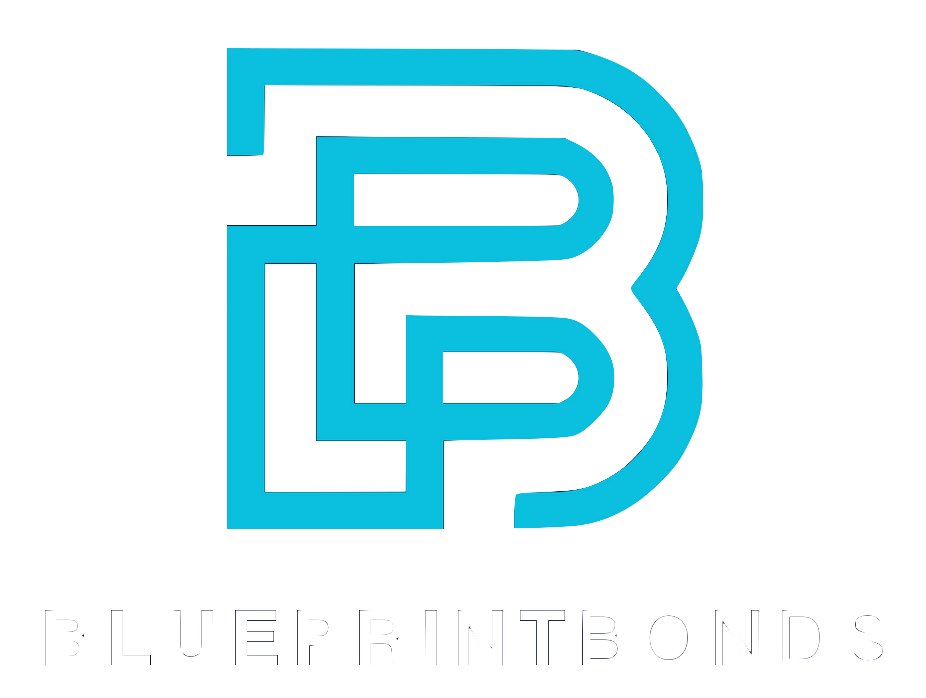In the high-stakes world of construction, managing costs while maintaining project quality is a constant challenge. The best contractors have developed a nuanced approach—often dubbed the “Bond Whisperer” strategy—that leverages surety bonds as a powerful tool to keep expenses in check and projects on track. This approach not only mitigates financial risk but also enhances trust and collaboration among stakeholders, ultimately driving down overall project costs.
Understanding how surety bonds function and why they are integral to cost control can transform the way contractors approach bidding, project management, and risk assessment. This article explores the strategies top contractors use to harness surety bonds effectively, supported by recent research and industry insights.
Why Surety Bonds Are a Game-Changer for Contractors
Surety bonds act as a financial guarantee that contractors will fulfill their contractual obligations. When a contractor defaults on a project without a surety bond, the cost to complete that project can skyrocket—studies show it can be as much as 85% higher than projects protected by bonds. This staggering figure highlights the economic value surety bonds bring to construction projects by reducing the risk of costly overruns and delays.
Lee Covington, president and CEO of the Surety & Fidelity Association of America (SFAA), emphasizes that “surety bonds deliver exceptional economic value for vital American infrastructure projects.” This isn’t just about financial security; it’s about fostering a culture of accountability and reliability that benefits everyone involved—from contractors and subcontractors to project owners and taxpayers.
By integrating surety bonds into their project planning, contractors gain access to a network of financial and technical support that can help navigate challenges before they escalate into expensive problems. This proactive risk management is a hallmark of the “Bond Whisperer” strategy.
Moreover, surety bonds can enhance a contractor's reputation in the industry. A contractor who consistently works with surety bonds demonstrates to clients and partners that they are committed to upholding their obligations and maintaining high standards of performance. This credibility can open doors to larger projects and more lucrative contracts, as clients often prefer to work with those who have a proven track record of reliability and financial responsibility.
Furthermore, the surety bond process encourages contractors to maintain thorough documentation and project management practices. This not only helps in securing bonds but also ensures that projects are executed efficiently and transparently. By keeping meticulous records and adhering to best practices, contractors can identify potential issues early on, leading to more successful project outcomes and satisfied clients. For more detailed insights into the economic benefits of surety bonding, the EY report on surety bonding offers a comprehensive analysis.
How Technology Adoption Amplifies Bonding Benefits
Modern contractors are increasingly turning to technology to stay competitive and control costs. A recent study found that 93% of contractors are embracing technology solutions to combat rising expenses and maintain profitability. This widespread adoption includes digital tools that streamline project management, enhance communication, and improve accuracy in cost estimation. As the construction industry evolves, the integration of technology not only aids in operational efficiency but also fosters a culture of innovation, allowing contractors to explore new methods and materials that can lead to more sustainable practices and better project outcomes.
One technology that complements the bonding strategy is Building Information Modeling (BIM). According to a PRISMA-based review, BIM significantly enhances collaboration among project stakeholders and delivers substantial cost and time savings. By visualizing the entire project lifecycle digitally, contractors can identify potential risks early, avoid costly rework, and optimize resource allocation. Furthermore, BIM facilitates real-time updates and adjustments, which are crucial in today’s fast-paced construction environment. This adaptability ensures that all parties remain aligned, reducing misunderstandings and enhancing overall project cohesion.
When combined with surety bonds, these technologies create a robust framework for risk mitigation. Bonds provide financial assurance, while digital tools offer operational transparency and efficiency. This synergy enables contractors to uphold their commitments confidently, reducing the likelihood of defaults and the associated financial penalties. Additionally, the data generated through these technologies can be invaluable for future projects, as it allows contractors to analyze past performance and make informed decisions moving forward. The ability to leverage historical data not only enhances project planning but also strengthens the contractor's position when negotiating new bonds or contracts.
Explore the detailed findings on BIM’s impact on infrastructure projects in this PRISMA-based review on arXiv.
Managing Material Costs and Contractual Risks
Material costs remain one of the most significant challenges for contractors. In 2024, 75% of specialty contractors identified materials as their primary cost driver, closely followed by business insurance and employee wages. Fluctuations in material prices can quickly erode profit margins if not carefully managed. The volatility in the supply chain, exacerbated by global events and local disruptions, has made it imperative for contractors to develop robust forecasting models and establish strong relationships with suppliers. By doing so, they can secure better pricing and ensure timely delivery, which is crucial for maintaining project timelines and budgets.
The “Bond Whisperer” strategy involves leveraging surety bonds not just as a financial safeguard but as a negotiating tool. Projects that require bonding often have clearer contract terms and better-defined risk allocation, which helps contractors anticipate and control material-related expenses. This proactive approach encourages contractors to engage in thorough due diligence before entering agreements, allowing them to identify potential pitfalls early in the process. Moreover, bonding can also enhance a contractor's reputation, as clients often perceive bonded contractors as more reliable and financially stable.
However, the contracting landscape itself can introduce risks. The 2025 Contracting Benchmark Report highlights that 60% of contracts are on counterparty paper, meaning they are drafted by the opposing party. This situation can lead to unfavorable terms and longer contract cycle times, increasing exposure to cost overruns and disputes. In addition, many contractors may find themselves locked into clauses that limit their ability to adjust to changing market conditions, further complicating their financial planning and risk management strategies.
Surety bonds help level the playing field by adding an extra layer of protection against these risks. Contractors who master bonding can negotiate more favorable terms and reduce the administrative burden of prolonged contract negotiations. Furthermore, understanding the nuances of bonding can empower contractors to advocate for themselves more effectively, ensuring that their interests are represented in the final contract. This knowledge can also facilitate smoother project execution, as contractors who are well-versed in their obligations are less likely to encounter disputes related to material costs or project timelines.
For more on how contract terms affect project risk, see the 2025 Contracting Benchmark Report. Additionally, exploring industry forums and networking with peers can provide valuable insights into best practices for managing material costs and navigating the complexities of contractual obligations in an ever-evolving market.
Addressing Cost Underestimation and Strategic Risk Management
Another critical factor in controlling construction costs is accurate project estimation. Unfortunately, studies reveal that cost estimates for transportation infrastructure projects are often systematically underestimated, sometimes due to strategic misrepresentation. This underestimation can lead to budget shortfalls and project delays, compounding financial risk. When initial projections fail to align with actual expenditures, the repercussions can ripple through the entire project lifecycle, affecting not only timelines but also stakeholder confidence and community trust.
Surety bonds play a vital role in counteracting these tendencies by requiring contractors to demonstrate financial stability and project competence before being bonded. This vetting process encourages more realistic budgeting and discourages overly optimistic bids that can jeopardize project completion. By ensuring that contractors are held accountable for their financial and operational commitments, surety bonds foster a culture of transparency and reliability in the construction industry.
Robert Carroll, Principal & Co-leader of Ernst & Young’s Quantitative Economic and Statistics Group, notes that “the multiple benefits surety delivers help manage risk and provide strong economic and performance value to construction projects.” By embedding bonding into their strategy, contractors adopt a disciplined approach to risk management that protects their bottom line. This proactive stance not only mitigates financial exposure but also enhances the overall quality of work, as contractors are incentivized to adhere to best practices and maintain high standards throughout the project.
To understand more about the challenges of cost estimation in public works, refer to this study on cost underestimation in infrastructure projects. Additionally, exploring case studies of successful projects that have effectively utilized surety bonds can provide valuable insights into best practices and strategies for overcoming common pitfalls in cost estimation. These examples highlight the importance of integrating comprehensive risk management frameworks that not only address financial aspects but also consider factors such as labor availability, material costs, and regulatory compliance, which all play a crucial role in the successful delivery of construction projects.
Building Trust and Long-Term Success with the “Bond Whisperer” Approach
At its core, the “Bond Whisperer” strategy is about building trust—between contractors, clients, suppliers, and sureties. Contractors who consistently deliver on bonded projects earn a reputation for reliability, which opens doors to more lucrative contracts and better financing terms.
Surety bonds act as a seal of approval, signaling to project owners that the contractor is financially sound and capable of managing risks effectively. This trust reduces the need for excessive contingency reserves and costly oversight, ultimately lowering project costs.
Moreover, as infrastructure projects grow in complexity and scale, the economic value of bonding becomes even more pronounced. The construction industry benefits from a virtuous cycle where bonding encourages responsible bidding, fosters collaboration, and drives innovation in project delivery.
Contractors aiming to master this approach should focus on building strong relationships with surety providers, investing in technology, and maintaining transparent communication throughout the project lifecycle. This holistic strategy ensures that costs remain manageable while quality and timelines are upheld.
In addition to fostering trust, the “Bond Whisperer” approach emphasizes the importance of ongoing education and training for all stakeholders involved. By staying updated on industry standards, regulatory changes, and best practices, contractors can better navigate the complexities of bonding and risk management. Workshops and seminars can serve as platforms for knowledge sharing, allowing contractors to learn from one another's experiences and challenges, thereby strengthening the entire network of trust.
Furthermore, embracing technology plays a pivotal role in enhancing the “Bond Whisperer” strategy. Utilizing project management software and data analytics can streamline operations, improve communication, and provide real-time insights into project performance. This technological integration not only boosts efficiency but also enables contractors to present more accurate and compelling proposals to clients and sureties alike, reinforcing their reputation as trustworthy partners in the construction process.
Conclusion: Embracing Surety Bonds as a Strategic Advantage
In an industry marked by uncertainty and tight margins, the “Bond Whisperer” strategy offers contractors a proven pathway to keep costs low and projects successful. Surety bonds are more than just a financial instrument—they are a strategic asset that enhances risk management, fosters collaboration, and drives economic value.
By integrating bonding with cutting-edge technology, realistic cost estimation, and savvy contract negotiation, contractors position themselves to thrive in a competitive marketplace. The data is clear: projects protected by surety bonds are less costly to complete and more likely to meet performance expectations.
Contractors who understand and embrace this approach will not only protect their businesses but also contribute to stronger, more resilient infrastructure for communities nationwide.




